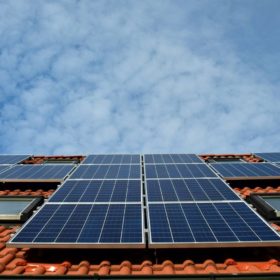The Global Polysilicon Marker (GPM), the OPIS benchmark for polysilicon produced outside China, was assessed at $18.319/kg, or $0.038/W this week, marking a 0.28% week-on-week increase.
Global polysilicon prices recorded a slight uptick this week, supported by reports of rising spot order prices. Market participants attributed part of this increase to customers seeking secure supply sources in response to ongoing uncertainties surrounding the U.S. Section 232 national security investigation into polysilicon and the Foreign Entity of Concern (FEOC) policy efforts.
Amid this policy environment, several participants noted that solar-grade polysilicon capacity in the U.S. has increased through the restart of previously idled facilities. Some also expect further capacity growth, either from new project expansions or by adjusting the production ratio between electronic-grade and solar-grade polysilicon. A source added that, depending on the potential outcome of the Section 232 investigation, there could be strong financial incentives for stakeholders to maximize U.S. solar-grade polysilicon output.
However, a manufacturer cautioned that because electricity consumption for electronic-grade polysilicon production is significantly higher than for solar-grade polysilicon, differences in energy costs between production bases must be carefully evaluated.
The source further explained that if the Section 232 investigation results in limited duty-free quotas for imported polysilicon—and as China’s domestic electronic-grade output accelerates, reducing overseas procurement—then the reallocation of U.S. polysilicon production capacity toward solar-grade material would be a natural and expected development.
Meanwhile, a new polysilicon production project in the Middle East has yet to commence operations, with some suggesting start-up may be delayed until January next year. A source added that the outcome of the Section 232 investigation will determine whether the plant’s products can enter the U.S. market or will instead need to compete in China.
According to Roth Capital, while earlier expectations pointed to a November release of the Section 232 investigation results, recent checks indicate that the timeline may be pushed back to January 2026.
The China Mono Premium—OPIS’ assessment for mono-grade polysilicon used in N-type ingot production—remained stable this week at CNY 52.200 ($7.34)/kg, or CNY 0.110/W.
The price has held steady since late September, remaining 46% above its year-to-date low in July.
The Silicon Branch of the China Nonferrous Metals Industry Association has revised its forecast for China’s polysilicon output in November from 125,000–130,000 MT to below 120,000 MT. A market participant attributed this to a significant production reduction at a major manufacturer’s facility in Southwest China due to rising electricity costs, alongside routine maintenance at some production bases of a leading fluidized bed reactor (FBR) granular polysilicon producer.
Progress on the highly anticipated polysilicon consolidation plan has yet to be officially announced. An industry insider revealed that negotiations over shareholding allocations have been challenging, as the results vary depending on the criteria applied—such as nominal capacity, effective operational capacity, or actual output levels.
Another source agreed, noting that while all participants face certain financial pressures, most still have access to reserve funds or external financing, which allows them to pursue higher ownership stakes. The source expects securing a stronger position in the consortium will be strategically important if future capacity expansion comes under stricter government regulation.
A market observer commented that although progress has been gradual, polysilicon overcapacity is slowly being addressed, and it will take time to digest the significant inventories accumulated over the past two years. The observer expects a visible contraction in polysilicon production capacity next year, with annual average prices likely to stabilize in the high CNY 50s/kg.
OPIS, a Dow Jones company, provides energy prices, news, data, and analysis on gasoline, diesel, jet fuel, LPG/NGL, coal, metals, and chemicals, as well as renewable fuels and environmental commodities. It acquired pricing data assets from Singapore Solar Exchange in 2022 and now publishes the OPIS APAC Solar Weekly Report.
The views and opinions expressed in this article are the author’s own, and do not necessarily reflect those held by pv magazine.
This content is protected by copyright and may not be reused. If you want to cooperate with us and would like to reuse some of our content, please contact: editors@pv-magazine.com.








By submitting this form you agree to pv magazine using your data for the purposes of publishing your comment.
Your personal data will only be disclosed or otherwise transmitted to third parties for the purposes of spam filtering or if this is necessary for technical maintenance of the website. Any other transfer to third parties will not take place unless this is justified on the basis of applicable data protection regulations or if pv magazine is legally obliged to do so.
You may revoke this consent at any time with effect for the future, in which case your personal data will be deleted immediately. Otherwise, your data will be deleted if pv magazine has processed your request or the purpose of data storage is fulfilled.
Further information on data privacy can be found in our Data Protection Policy.